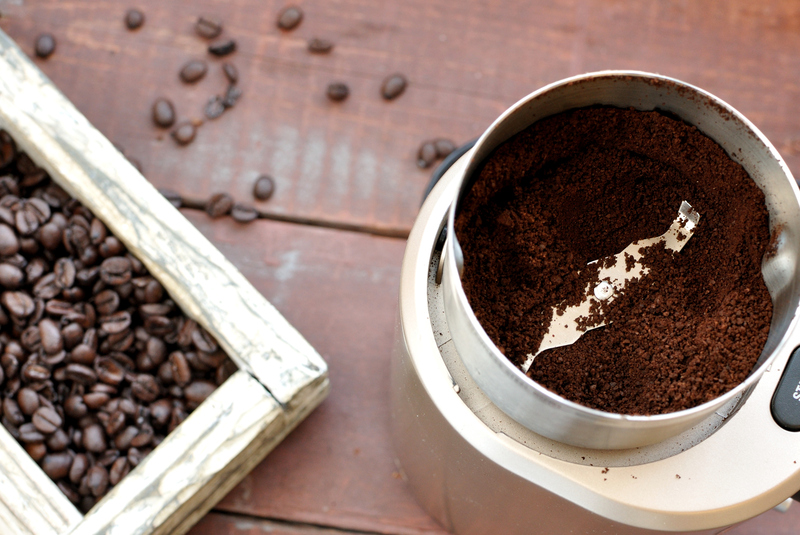Eye-Catching Shine: Ultimate Jewellery Cleaning Methods
Posted on 26/09/2025
Eye-Catching Shine: Ultimate Jewellery Cleaning Methods
Whether it's a dazzling diamond ring, a delicate gold chain, or a vibrant gemstone necklace, your jewelry deserves to shine as brightly as the day you first received it. Over time, however, exposure to air, skin oils, lotions, and everyday dirt can dull the sparkle of even the most exquisite pieces. If you're searching for the best jewellery cleaning methods to restore your favorite pieces to their original brilliance, you've come to the right place. In this comprehensive guide, we'll explore the ultimate techniques and expert tips for maintaining and cleaning your jewellery, ensuring every piece stays stunning and eye-catching.

Understanding the Importance of Regular Jewellery Cleaning
Before diving into the specific cleaning methods, it's crucial to understand why keeping your jewellery clean is more than just an aesthetic preference. Regular jewellery cleaning:
- Preserves Brilliance and Luster: Removing tarnish and residues allows gemstones and metals to reflect light beautifully.
- Prevents Damage: Build-up of dirt and grime can scratch or weaken settings, leading to potential loss of stones or structural integrity.
- Protects Skin Health: Dirty jewellery can harbor bacteria or allergens that may irritate the skin.
- Extends Longevity: Consistent care ensures your pieces remain heirloom-worthy for generations.
Let's discover the most effective techniques for bringing back that eye-catching shine to your treasured jewels.
Ultimate Jewellery Cleaning Methods
1. Classic Warm Water and Mild Soap Method
For most gold, platinum, and nonporous gemstones (like diamonds, sapphires, and rubies), the simplest way to clean jewellery is with warm water and mild soap.
- Fill a small bowl with warm water (not hot) and add a drop or two of gentle dishwashing soap.
- Soak your jewelry for 15-20 minutes to loosen dirt and oils.
- Gently scrub with a soft-bristle toothbrush, paying attention to crevices and undersides.
- Rinse thoroughly with clean water and pat dry with a lint-free cloth.
This method is effective, cost-saving, and safe for most everyday pieces. Avoid using harsh detergents or soaps with moisturizers, which may leave a film on your jewelry.
2. Baking Soda and Vinegar Solution for Silver Jewellery
Silver is prone to tarnish and needs a different approach. Restore its gleam with this tried-and-tested homemade solution:
- Line a bowl with aluminum foil, shiny side up.
- Place your silver pieces on the foil and sprinkle 2 tablespoons of baking soda over them.
- Slowly pour in half a cup of white vinegar. The mixture will fizz as it reacts with tarnish.
- Let the items soak for 2-5 minutes, then rinse thoroughly.
- Buff with a clean, soft cloth for the final polish.
This cleaning method for jewellery is both natural and effective, but always test on a small area first to ensure your items don't have special coatings or antique finishes that could be affected.
3. Gentle Cleaning for Pearls and Porous Gemstones
Pearls, opals, turquoise, and certain other gemstones are more delicate and can be damaged by chemicals or excessive moisture. For these, gentle cleaning is key:
- Dampen a soft, clean cloth with lukewarm water mixed with just a hint of mild soap.
- Wipe each bead or stone carefully, avoiding soaking or harsh rubbing.
- Use a separate damp cloth to remove residual soap.
- Lay flat on a towel to air dry completely before storage.
Remember: Avoid soaking pearls, as water can weaken their thread and dull their surface. Never use ultrasonic cleaners for these sensitive gems.
4. Ultrasonic Jewellery Cleaners: High-Tech Shine
One of the most advanced jewellery cleaning methods available to consumers today is the ultrasonic cleaner.
- Ultrasonic cleaners use high-frequency sound waves to create microscopic bubbles within a cleaning solution, dislodging dirt from intricate settings and inaccessible areas.
- They work exceptionally well for hard gemstones and metal-only pieces (such as diamonds, sapphires, gold, and platinum).
Important: Do not use ultrasonic cleaning for soft, porous, or treated stones (like pearls, opals, emeralds, or vintage/antique jewelry), as it may cause irreversible damage.
5. Professional Jewellery Cleaning Services
If your pieces are particularly valuable, intricate, or you want an eye-catching shine with zero risk, seeking the services of a professional jeweler is a wise choice. Experts can:
- Assess and clean using specialized solutions and tools matched to each metal and gemstone type.
- Inspect for loose stones, weakened settings, or wear that you might miss at home.
- Apply professional polishing techniques to bring out a showroom-quality sparkle.
Many jewelers offer complimentary cleaning with purchase or routine visits--take advantage for maximum longevity and beauty!
Specialized Jewellery Cleaning Techniques by Material
Cleaning Gold Jewellery
Gold is lustrous yet relatively soft. For regular at-home cleaning:
- Mix a few drops of mild dish soap in warm (not hot) water.
- Soak for 15 minutes, then gently brush and rinse.
- For stubborn spots, a dab of baking soda paste can remove tarnish without scratching.
Avoid exposing gold to chlorine, bleach, or abrasive materials.
Cleaning Silver Jewellery
Aside from the baking soda and vinegar method mentioned earlier, you can also use commercial silver polishing cloths for a quick touch-up between deeper cleanings. Store silver pieces in anti-tarnish pouches or cloths to prolong their brilliance.
Cleaning Platinum Jewellery
Platinum is highly durable and resists scratching, but it can become dull with residue build-up. Use the warm water and mild soap method, scrubbing gently, and finish with a professional polish every couple of years for a truly eye-catching shine.
Cleaning Diamond Jewellery
Even the hardest substance on earth can lose its sparkle when dirty. Diamonds attract oils and dirt easily. Clean them frequently with a soft toothbrush, mild soapy water, and make sure to rinse thoroughly. An occasional soak in a commercial jewellery cleaning solution is also safe for diamonds (double-check for non-porous settings).
Caring for Gemstone Jewellery
Gemstones vary widely in their care needs. While diamonds and sapphires can handle most cleaning methods, avoid exposing emeralds, opals, and turquoise to ultrasonic cleaners, chemicals, or heat. Always check cleaning instructions specific to your stone, or err on the side of caution with gentle hand-cleaning.
Cleaning Costume and Fashion Jewellery
Costume jewelry can be made of plated metals, glass, or plastic. To clean:
- Wipe gently with a soft, dry cloth after every use.
- If deeper cleaning is needed, lightly dampen the cloth--never soak, as water can dislodge glue or cause corrosion.
Limit exposure to perfume, hairspray, and water to maintain its finish.
Jewellery Cleaning Myths and Mistakes to Avoid
- Toothpaste Is Not a Cleaner: Abrasive and often damages both metal and gems.
- Ammonia and Bleach Can Harm Jewellery: Strong chemicals cause pitting, discoloration, and may weaken settings.
- Paper Towels Are Too Abrasive: Use soft cotton or microfiber cloths only.
- Ultrasonic Cleaning Everything: Not all stones or vintage pieces are suited for this technique. When in doubt, clean by hand.
Best Practices for Jewellery Maintenance
- Remove jewellery during:
- Handwashing and showering
- Applying beauty products or perfumes
- Swimming (chlorine and salt water can be harsh)
- Exercising or doing chores (to prevent impact and exposure to sweat or chemicals)
- Store each piece separately in a soft pouch or lined box to prevent scratching and tangling.
- Clean jewellery regularly--for pieces you wear daily, aim for a gentle cleaning every week and a deeper clean monthly.
- Inspection: Check prongs and clasps periodically to ensure security.
Step-by-Step Guide: How to Clean Your Jewellery at Home
- Gather Supplies: Mild dish soap, warm water, a soft-bristled toothbrush, microfiber cloths, a bowl, and (optional) baking soda and white vinegar for silver.
- Prepare Cleaning Solution: Mix dish soap in a bowl of warm water.
- Soak Jewellery: Place pieces in solution for 15-20 minutes (less for fragile stones).
- Brush Gently: Use the toothbrush to remove dirt from nooks and crannies.
- Rinse and Dry: Rinse under running water (over a strainer) and pat dry.
- Polish: Buff with a clean microfiber cloth for a final gleam.

FAQs: Jewellery Cleaning and Shine
- How often should I clean my jewellery?
For pieces worn daily, clean weekly. For occasional wear, once every few months is sufficient. - Can I use commercial jewellery cleaners?
Yes, but always choose a cleaner suitable for both the metal and gemstone in your piece. Follow the label's instructions closely. - Is it safe to use ultrasonic cleaners at home?
Yes, for most precious metals and hard stones. Avoid use with porous stones, pearls, or antique settings.
Conclusion: Keep Your Sparkle Unforgettable
Maintaining the eye-catching shine of your jewellery is simple when you follow the right methods and pay attention to the specific needs of your pieces. Whether you prefer classic soap and water, a sprinkle of baking soda, or the precision of professional tools, adopting these ultimate jewellery cleaning techniques will ensure your treasured jewels always captivate and shine.
Remember, a little care goes a long way--regular cleaning, mindful storage, and gentle handling can help your jewellery maintain its stunning allure for years to come. Now that you know the best ways to clean and shine jewellery, you're ready to keep every cherished piece looking as brilliant as ever!





